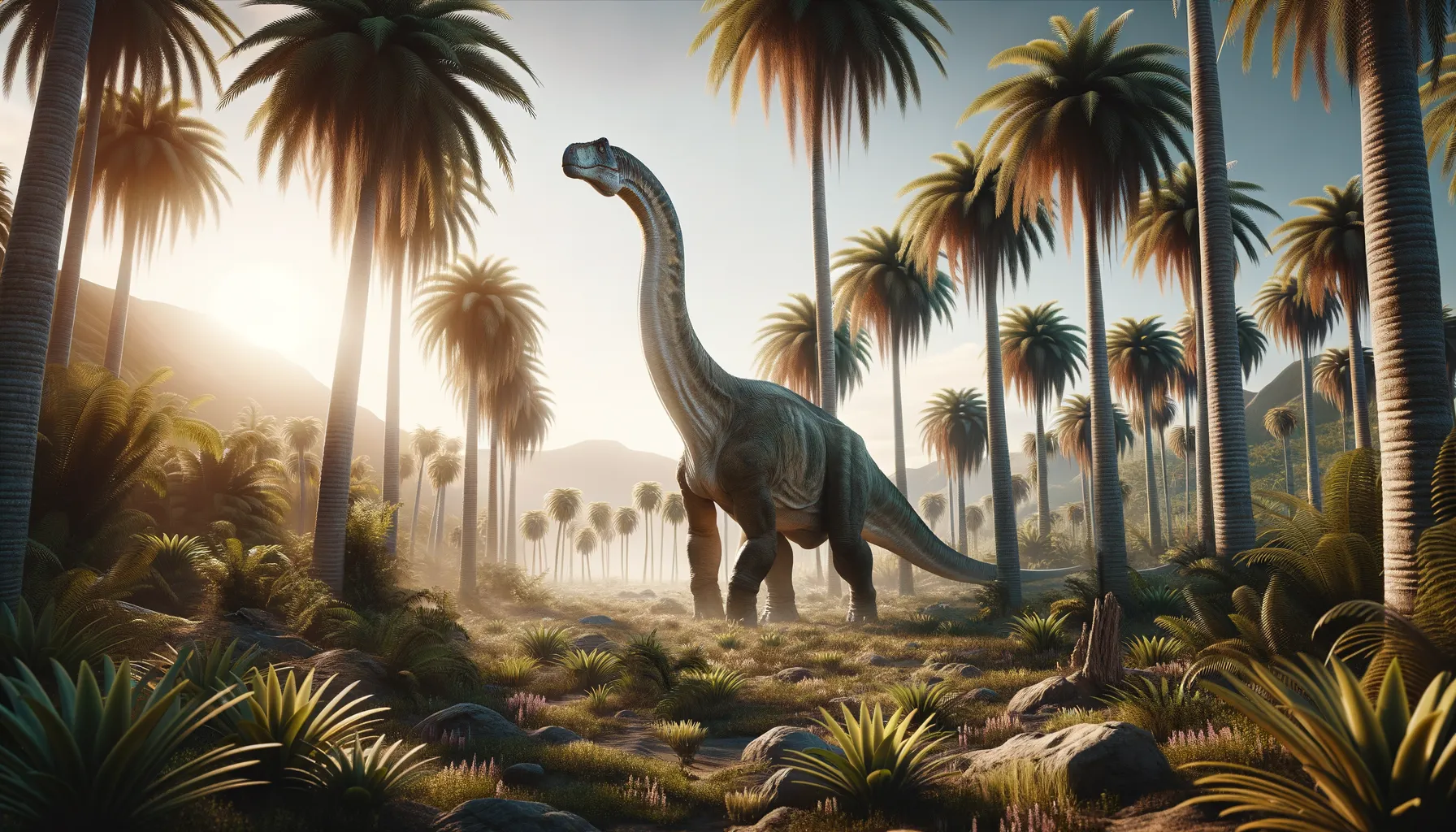
Angolatitan
Giant of the ancient Angolan plains.
Period
Cretaceous
Length
Approximately 13 meters in length.
Height
About 10 meters tall at the shoulder.
Weight
Estimated to weigh around 12 tons.
Angolatitan was a large, long-necked sauropod, a type of dinosaur that roamed the Earth during the Cretaceous period. Known for its massive size, it is one of the first dinosaurs to be discovered in Angola. As a herbivore, it likely fed on tall coniferous plants, using its long neck to reach high foliage. Its discovery provided important insights into the diversity of dinosaurs in Africa during this time.
Diet
Angolatitan was a herbivore, primarily feeding on coniferous plants and other vegetation available at the time. Its long neck allowed it to reach leaves high up in trees, while its massive body helped it consume large quantities of food to sustain itself.
Hunting
Being a herbivore, Angolatitan did not hunt. Instead, it spent much of its time grazing and foraging for plants. Its size likely protected it from many predators.
Environmental challenges
Living in the Cretaceous period, Angolatitan faced environmental challenges such as climate changes and fluctuations in food supply. These dinosaurs may have needed to migrate to find adequate nutrition, especially during dry spells. They also had to contend with predators, although their size offered substantial protection. Periodic volcanic activities would have altered their habitat, forcing adaptation.
Speed
Angolatitan was likely slow-moving due to its massive size.
Lifespan
Estimated to have lived for several decades.
First discovery
Discovered in Angola in 2005 and described in 2011.
Fun Facts
- Angolatitan was the first dinosaur discovered and named in Angola, a country in southwestern Africa.
- The name 'Angolatitan' means 'Angolan giant,' highlighting its impressive size and origin.
- Angolatitan belonged to a group of dinosaurs called sauropods, known for their long necks and tails.
- It lived around 90 million years ago during the Cretaceous period, a time when many diverse dinosaurs roamed the Earth.
- The discovery of Angolatitan helped scientists understand more about the distribution of dinosaurs across ancient continents.
- Angolatitan's fossils were found in the Iembe Formation, a geological formation that provides a window into the region's distant past.
- Despite being a gigantic creature, Angolatitan was a plant-eater, using its long neck to reach vegetation.
Growth and Development
Angolatitan, like most sauropods, experienced rapid growth during its early years to minimize vulnerability to predators. Once it reached substantial size, its growth rate would have slowed. This strategy helped ensure survival during vulnerable juvenile stages. Fossil evidence suggests it took years to reach full maturity, resulting in a long growth period.
Habitat
Angolatitan lived in what is now modern-day Angola, which during the Cretaceous was a region rich in vegetation. This environment provided abundant food sources for herbivores like Angolatitan. Its habitat would have been warm and semi-arid, with periods of wet and dry seasons. Forests and open plains offered diverse scenery, allowing for roaming and grazing.
Interaction with other species
Angolatitan coexisted with a variety of other dinosaurs and prehistoric animals, participating in complex ecosystems. As a plant-eater, it didn't compete with carnivorous dinosaurs for food. However, it may have competed with other herbivores for resources. It likely used its size to intimidate smaller dinosaurs and assert dominance over shared resources.
Natural lifespan
Angolatitan's natural lifespan was likely several decades long.
Reproduction
Like other sauropods, Angolatitan likely laid eggs in nests on the ground. These nests were possibly shared among groups to protect against predators. Hatchlings were vulnerable initially, needing to mature rapidly to avoid threats. Parental care was probably limited after laying eggs, with infants relying on group protection.
Social behaviour
Angolatitan might have exhibited social behavior, forming groups to enhance survival chances against predators. Such herding behavior also facilitated breeding and rearing of young. Within these groups, older and larger individuals likely played dominant roles. This social structure proved advantageous during migrations or defending against threats.
Fossil locations
Angolatitan fossils have been primarily found in the Bentiaba area of Angola. The discovery in 2005 marked a significant exploration success in the region. Fossil evidence from this location contributed to understanding African dinosaur diversity. These findings provided a window into the mid-Cretaceous period ecosystem in this part of Africa.
